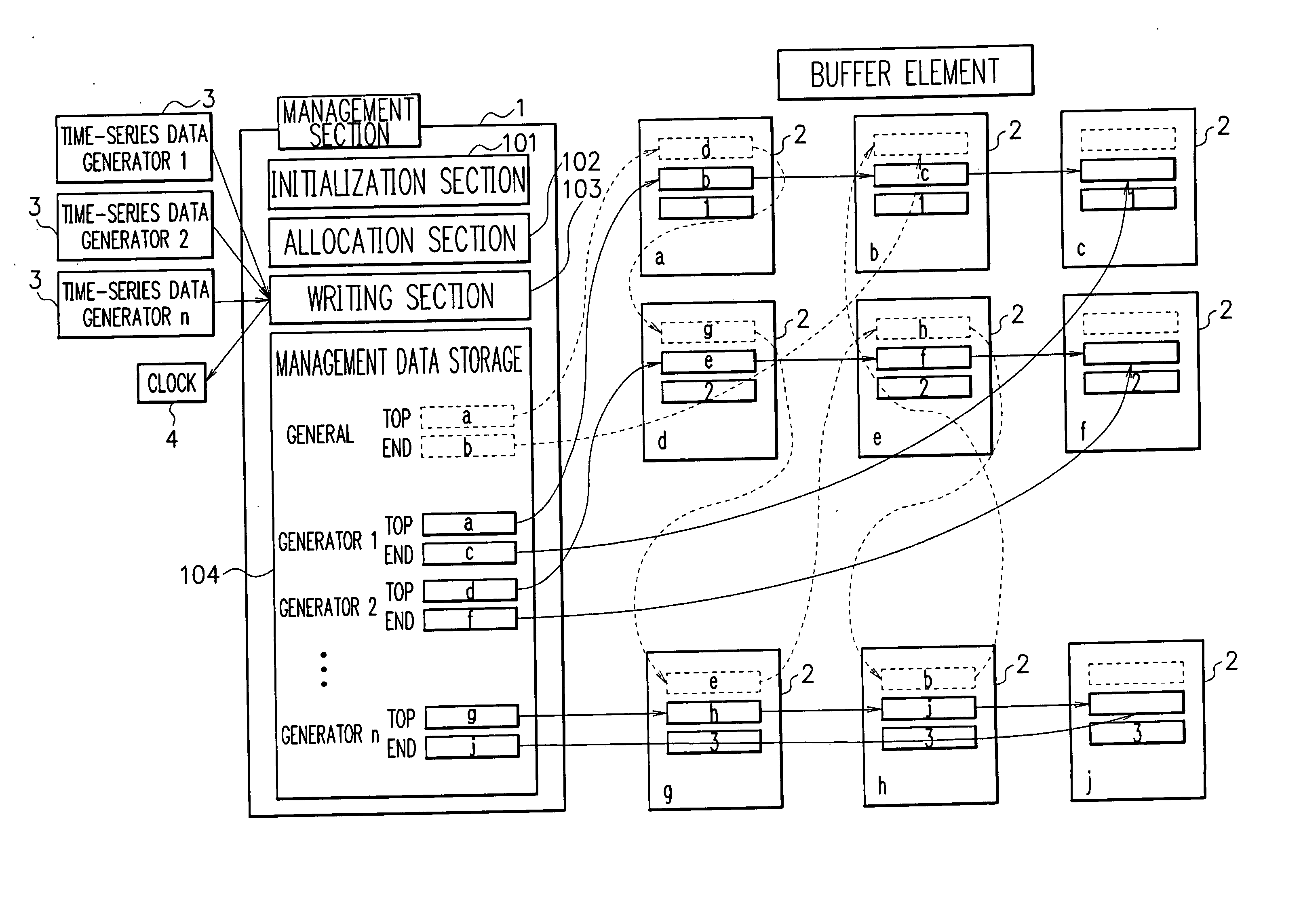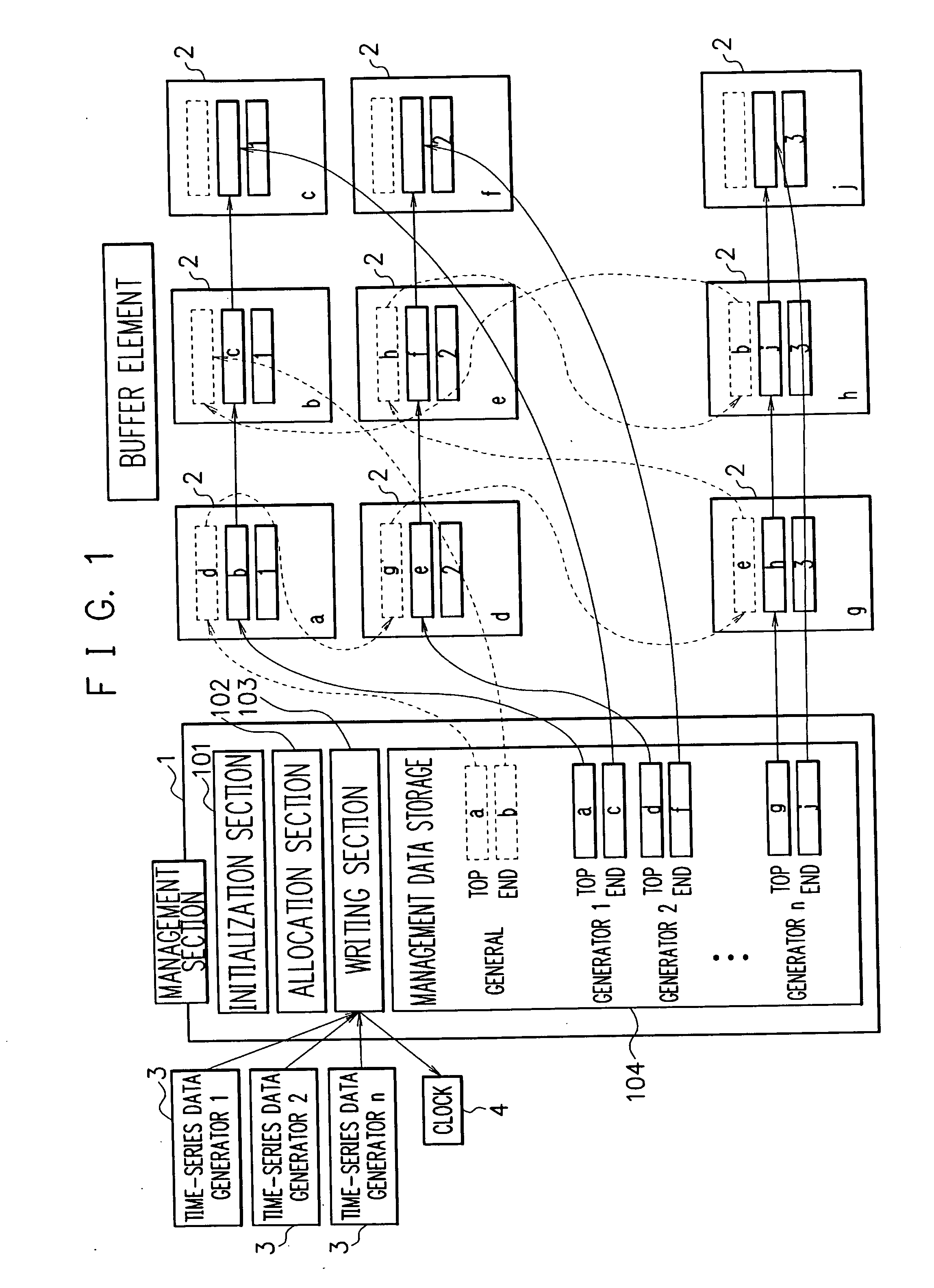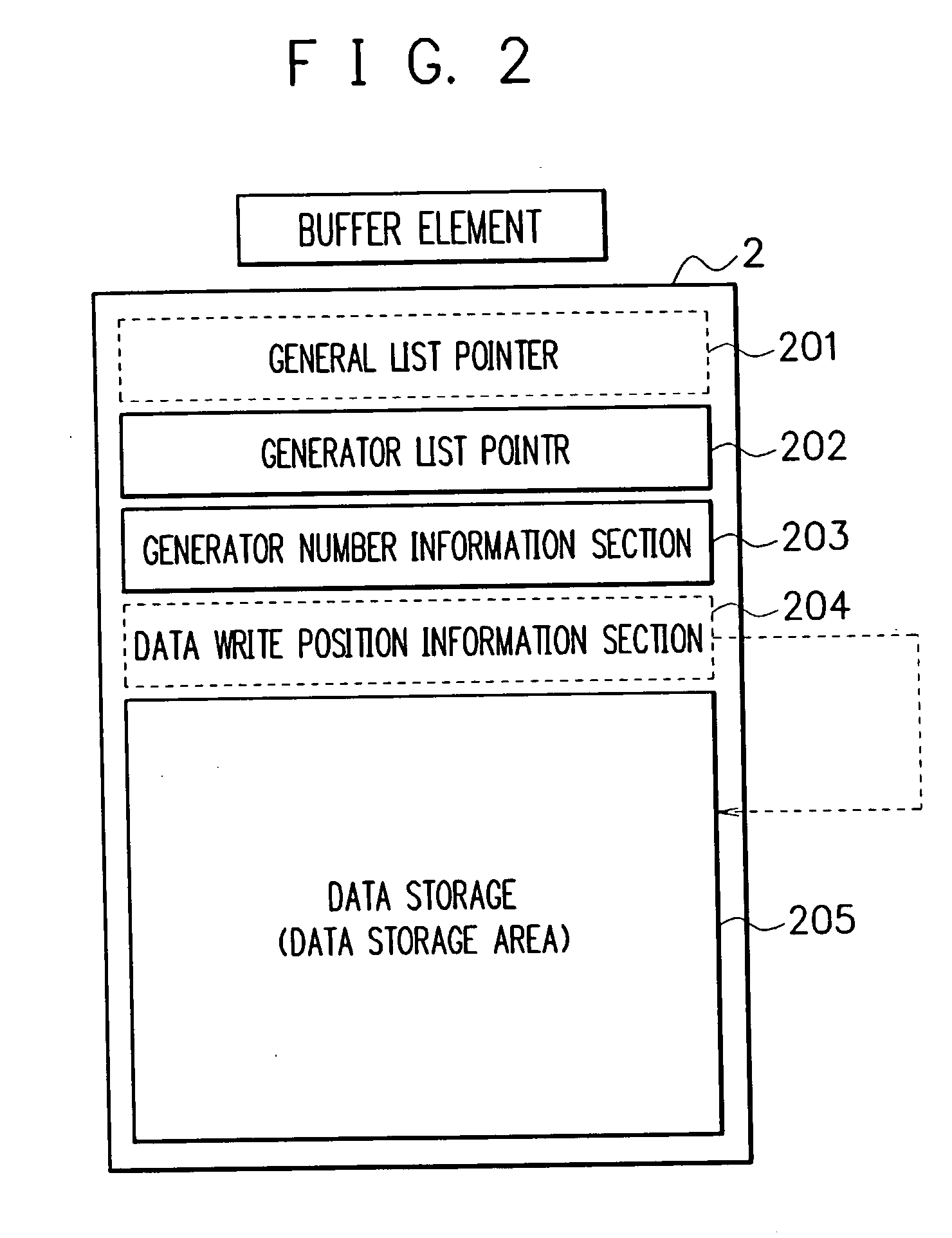Method, device, system and program for time-series data management
- Summary
- Abstract
- Description
- Claims
- Application Information
AI Technical Summary
Benefits of technology
Problems solved by technology
Method used
Image
Examples
first embodiment
[0061]FIG. 1 is a diagram showing an example of the construction of a device or a system to which is applied a time-series data management method according to the first embodiment of the present invention. As can be seen in FIG. 1, the time-series data management device or system comprises a management section 1, a plurality of buffer elements 2 (2-a to 2-h and 2-j), a plurality of time-series data generators 3 (3-1 to 3-n), and a clock 4. The management section 1 includes an initialization section 101, an allocation section 102, a writing section 103, and a management data storage 104.
[0062]FIG. 2 is a diagram showing an example of the construction of the buffer element 2. As shown in FIG. 2, each of the buffer elements 2 (2-a to 2-h and 2-j) includes an general list pointer 201, a generator list pointer 202, a generator number information section 203, a data write position information section 204, and a data storage (data storage area) 205.
[0063] The general list pointer 201 is ...
second embodiment
[0118]FIG. 6 is a diagram showing an example of the construction of a device or a system to which is applied a time-series data management method according to the second embodiment of the present invention. As can be seen in FIG. 6, the time-series data management device or system comprises a management section 1, a plurality of buffer elements 2 (2-a to 2-h and 2-j), a plurality of time-series data generators 3 (3-1 to 3-n) each including a clock4, and an order counter 5. That is, the time-series data management device or system of the second embodiment is in many respects basically similar to that of the first embodiment except for the presence of the order counter 5 and that each time-series data generator 3 includes the built-in clock 4. The management section 1 of the second embodiment includes, as with that of the first embodiment, an initialization section 101, an allocation section 102, a writing section 103, and a management data storage 104. Each of the buffer elements 2 i...
PUM
 Login to View More
Login to View More Abstract
Description
Claims
Application Information
 Login to View More
Login to View More - R&D
- Intellectual Property
- Life Sciences
- Materials
- Tech Scout
- Unparalleled Data Quality
- Higher Quality Content
- 60% Fewer Hallucinations
Browse by: Latest US Patents, China's latest patents, Technical Efficacy Thesaurus, Application Domain, Technology Topic, Popular Technical Reports.
© 2025 PatSnap. All rights reserved.Legal|Privacy policy|Modern Slavery Act Transparency Statement|Sitemap|About US| Contact US: help@patsnap.com



